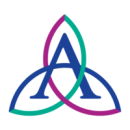Every Chicago Bulls fan has their favorite Michael Jordan moment, be it the “flu game,” the shot that sealed game six of the 1998 Finals, his first Finals win in 1991 or another iconic MJ memory.
For many, there is a favorite Jordan quote, too, from the star’s decades of media appearances, at turns inspiring, clever and irreverent. And for managers working to develop team culture, one particular Jordan comment is particularly apt — “Talent wins games, but teamwork and intelligence wins championships.”
At five local companies, engineering leaders are harnessing that energy to build championship-level team culture. With a focus on shared values, these leaders have defined key features of culture that empower team members to do their best work as individuals and alongside their peers.
According to Awais Ashgar, a software engineering manager at Federal Reserve Bank of Chicago, the fruits of building a strong culture cut across much of his team’s work. “I believe that our culture has enabled the team’s success in meeting our goals, navigating changes and upskilling as we continue to modernize our application portfolio and hosting environment,” he said.
Built In Chicago heard from Ashgar and leaders at Tandem, Mastery Logistics Systems, CardX and Ascension about how they put these lessons into action to cultivate a strong team culture for their engineers to thrive.

Ascension is a non-profit, Catholic healthcare system leveraging technology to improve patient care.
How would you describe your engineering team culture? And what does that look like in action?
Our collaborative spirit was prominently on display during the early days of the pandemic when our teams across functions, including research, design, product, engineering, operations, medical, legal and finance, came together and rapidly prototyped, built and launched several products. Our collaboration created our COVID-19 self-assessment and screening apps, as well as our virtual visit products to help our staff and communities navigate the shifts in patient care brought about by the pandemic. More recently, we have taken this collaborative spirit to the next level by coming together and collectively working on designing and building exciting digital consumer experiences at Ascension.
Innovation is also at the heart of our work. We empower our teams to use the latest tools, technologies and frameworks, and to creativity to solve problems. We embrace our annual Hackathon event as a way for groups to come together and innovate with new ideas, build software prototypes and have a lot of fun in the process.
Being mission-focused is an important aspect of our culture. We want to lead digital transformation of healthcare with a special focus on communities in need. Our engineers are inspired by the fact that the products they build help our clinicians, and positively support patient care. Making a meaningful contribution to such an important mission is a great motivator for all of us and drives our culture.
As a leader, how have you worked to cultivate this type of culture?
I cultivate this culture by leading with kindness and empathy, while also prioritizing learning and growth opportunities for my teams. I lead by example to build a culture that ensures psychological safety, which fosters openness and transparency and allows us to effortlessly collaborate with each other. I have also formalized processes to ensure a feedback loop between my teams and myself and make sure we act upon the feedback to make it a meaningful exercise for them.
I use my one-on-ones with team members to not only check in with them about their work as well as their wellbeing, their personal interests and work-life balance because I truly care about them and their happiness. We also routinely discuss learning and growth opportunities during these one-on-ones so I can support their goals.
Our culture of collaboration and innovation helps develop both engineers’ skills and their confidence.”
What are some ways this culture sets the engineers on your team up for success and allows them to grow and thrive in their careers?
Our culture allows our engineers to learn, grow and discover new pathways to ensure their short-term and long-term success. We emphasize collaboration and innovation, which really empowers engineers to grow their skills, try new things and continually develop in their profession. We work collaboratively, so there are lots of opportunities to learn from each other and to ideate together.
I have mentored several engineers over the years, and our culture of collaboration and innovation helps develop both their skills and their confidence. As an example, one of our mobile engineers expressed an interest in being a backend engineer during my 1-on-1 with them. We formulated a growth plan that included academic learning through resources provided by Ascension, as well as development work in backend engineering for Ascension products.
Over time, they started growing in confidence, improved their skillset and gradually transitioned into a backend engineer role. I routinely checked in on them and kept connecting them to relevant opportunities as and when they came up. Today, they are a lead engineer and not only drive critical backend work, but also take ownership as part of our team.
Federal Reserve Bank of Chicago is one of 12 regional Reserve Banks that together serve as the United States’ national bank.
How would you describe your engineering team culture? And what does that look like in action?
We have strong collaboration within the engineering team and with stakeholders across the organization. This has helped with problem solving and knowledge sharing within the team as well as maintaining a great working environment.
Agility and adaptability are key behaviors of any successful engineering team. Our team has been able to respond to evolving business and technology needs by following Agile principles.
Our engineering teams are self-organized and empowered to make their own decisions with minimal oversight, which has led to greater results and delivery of business value.
As a leader, how have you worked to cultivate this type of culture?
It’s important for a leader to empower their team to make their own decisions. I believe in empowering the “how,” to listen and guide the team and support them in building and fostering an inclusive environment where all team members feel valued and encouraged to contribute to the team’s success.
It’s important for a leader to empower their team to make their own decisions.”
What are some ways this culture sets the engineers on your team up for success and allows them to grow and thrive in their careers?
The engineering team has been able to continuously improve the way we work when it comes to the process, technology stack and products we deliver. As we build new apps and transition existing products to the cloud, the team has been using serverless, API-based architecture, which is a huge shift from applications with monolithic architecture.
In terms of career growth, team-oriented culture, behavioral competencies and a strong foundation in cloud development have supported the growth and career progression of several engineers and enabled them to transition to leadership or more senior technology roles.
Tandem offers strategy, design and technology solutions to its business partners and builds custom software for companies across a wide range of industries.
How would you describe your engineering team culture? And what does that look like in action?
We have a very collaborative engineering culture that includes daily pairing sessions and code reviews, weekly engineering discussions and presentations, sharing of new things we're learning and open discussions about questions or challenges we’re facing.
We’re a remote-first company, so every engineer can work from any location that is right for them. Everyone has the option to start and end their day as fits their project schedule as long as they are available during core hours.
One of Tandem’s core values is continuous improvement. We’re always improving ourselves and our services on an iterative cycle of development, feedback-gathering and building on previous work and experience. Our teams bring Agile practices to our requirements discovery and project processes, and we all pursue individual professional development goals.
As a leader, how have you worked to cultivate this type of culture?
I want to foster a culture where engineers feel safe to ask questions or admit that they don’t have an immediate solution to a problem, so I try to be transparent when I'm learning something that's new to me. Then we can focus on finding a solution together. We also have a Slack channel where engineers post technical questions, and I encourage people to post questions that they bring me to the wider group because it usually ends up being a beneficial discussion for everyone.
We have a weekly engineering meeting that includes open discussion about challenges we’re facing and technical topics that we’re learning about. Every engineer on the team takes turns giving presentations and hosting the meeting.
To encourage growth, I work with engineers to set goals. We receive regular feedback through recurring check-ins, project retros and semi-annual reviews. Every engineer has a professional development budget to purchase training materials, and we try to set dedicated time for professional development every month. Tandem also provides funding and resources for engineers to attend or speak at conferences, present at company-wide talks and take on team- or technical-lead roles on projects.
I want to foster a culture where engineers feel safe to ask questions.”
What are some ways this culture sets the engineers on your team up for success and allows them to grow and thrive in their careers?
Being able to collaborate provides engineers daily opportunities to learn something new, grow our skills, develop meaningful career connections and produce higher-quality work. Having a remote-first, flexible culture helps us manage our responsibilities in a way that is optimal for our individual schedules and needs. Our growth-oriented culture allows engineers to strategize and prioritize career growth so that we’re able to stay up-to-date with industry trends, build new technical and consulting skills, network with professionals in our industry and discover new ways of tackling difficult challenges.
Ultimately the best examples of the way Tandem positions engineers for success are the many engineers who have started as an apprentice or entry-level software engineer and over time moved along our career path all the way to a senior or principal engineer role.
Mastery Logistics Systems is a transportation management system that offers a cloud-based SaaS technology solution to help companies increase automation, visibility and productivity across the supply chain.
How would you describe your engineering team culture? And what does that look like in action?
Support among our engineers is critical to the success of our organization. Teams work together to ensure every blocker is removed so we can achieve success as a unit. I’ve been impressed with the gratitude we show each other in engineering. Saying “thank you” when an individual or team takes time out of their day goes a long way in relationship building.
Focus is finite. When the work is clear and expectations are set, teams can do amazing things. A culture that is focused and noise-free will dominate the work ahead, and it is up to a good leader to reduce the level of noise within engineering.
At Mastery, we are led by two incredible founders that keep us balanced — an industry visionary and a leader who has a history of establishing amazing cultures. When there are no questions about the company goals and culture expectations, the success is truly up to the execution of the team. We are fortunate at Mastery to know how each team can directly contribute to the success of the organization.
As a leader, how have you worked to cultivate this type of culture?
I have learned from my mistakes. In my younger days, I was not a trusting manager. My distrust cultivated several bad habits I had to reverse. As I matured, I realized trust is the currency that fuels a team. During my time at Mastery, I have had great fortune, hiring brilliant engineers and technology leaders, and I have fought the urge to have my hands on the steering wheel. All too often, fantastic technology companies hire brilliant technologists and then place obstacles in their path to success. A culture of accountability and trust is key to solving problems essential to the company.
A culture of accountability and trust is key to solving problems essential to the company.”
What are some ways this culture sets the engineers on your team up for success and allows them to grow and thrive in their careers?
Last year, one of our engineering leads asked to deviate from the planned roadmap to include work on service stability. This work would enhance monitoring, error handling and scale improving company health in the long run. As an organization, I love that an engineering lead can identify a problem area and provide a solution to increase stability for all our current and future customers. We show trust in our engineers by letting them identify problems and recommending a path forward. This example proves our engineering leads want what’s best for the longevity of Mastery and its customers. Hire brilliant people and trust them to do their jobs — it can be that simple.
CardX provides a simple and compliant solution for businesses to accept credit card payments at zero percent cost.
How would you describe your engineering team culture? And what does that look like in action?
We always want to go to the next level in understanding things. We question everything, and we want to verify everything.
The hardest thing to do is to be honest about things we don’t know, especially in front of a group. So, when someone on my team comes to me to let me know they didn’t understand what we were talking about in a meeting, I think that’s a sign of a healthy team. As a leader, that shows me that people are comfortable enough in the environment I’ve built to be honest when they’re struggling and ask for help.
I encourage the pursuit of excellence in all of the work we do. We take a lot of pride in the work we put out in the world, even if it’s not something the customer actively notices. The work we put out there is the reflection of our time spent together as a team.
The work we put out there is the reflection of our time spent together as a team.”
As a leader, how have you worked to cultivate this type of culture?
I lead by example because I believe team culture is created by showing, rather than telling. I ask questions and pursue excellence myself. I challenge my team’s assumptions and I want them to challenge mine, too. I don’t want anyone to think I know everything because I definitely don't. I try to show people around me that I’m just doing the best I can based on my experiences, and they can do that, too.
What are some ways this culture sets the engineers on your team up for success and allows them to grow and thrive in their careers?
For engineers, some milestones may happen relatively quickly, like getting your first job or closing your first ticket. But eventually, they’ll get into thornier things like figuring out entire features or tasking out work to other people. I want to empower my engineers to take chances and get out of their comfort zone and try to contribute in larger ways. I think this readies people for the next step in their career.
One of my current team members started at CardX fresh out of bootcamp four years ago. Now, he’s an engineering manager and still with us. This growth is an example of what happens when a leader provides opportunities for people to grow and find the direction where they’ll flourish.















